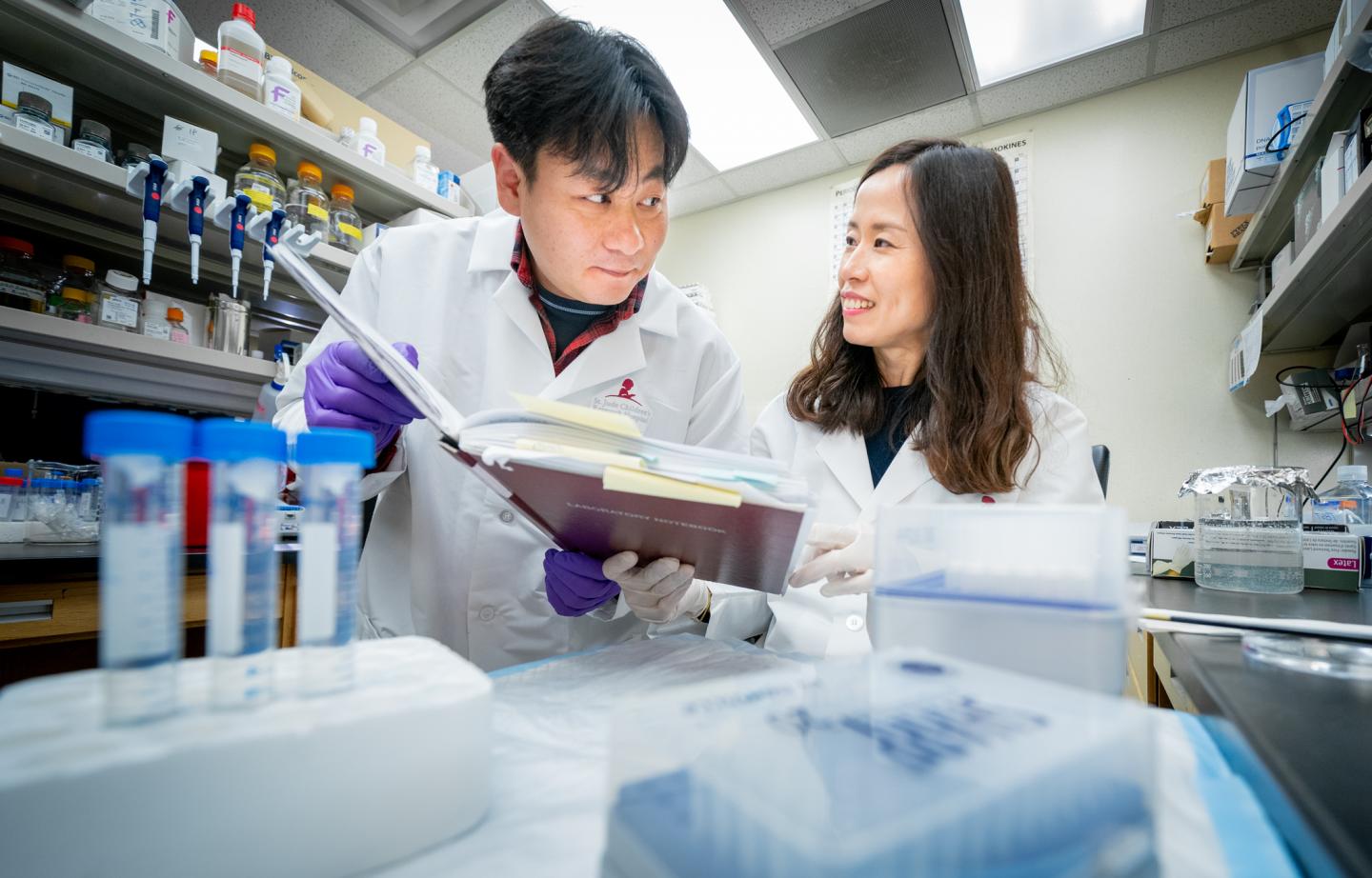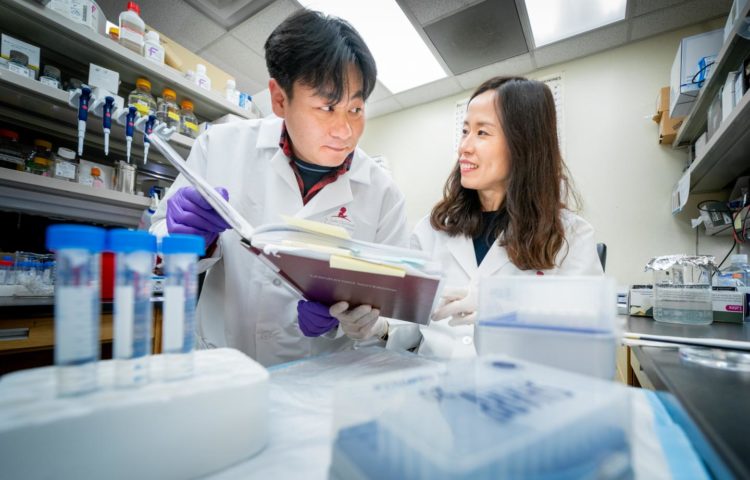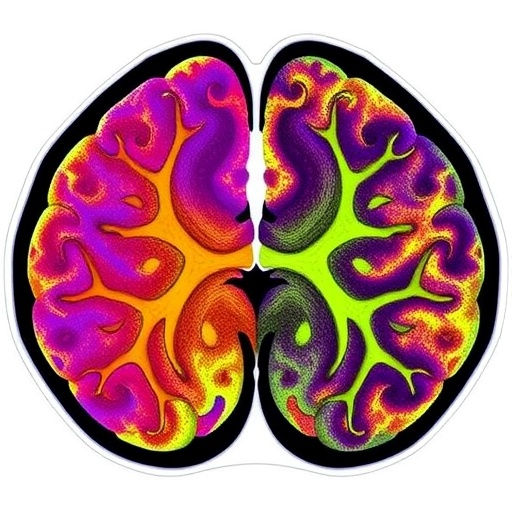Scientists at St. Jude Children’s Research Hospital have implicated two microRNAs in the biological processes that underlie the ventricle enlargement observed in models of schizophrenia

Credit: St. Jude Children’s Research Hospital
Enlarged cerebral ventricles are found in 80% of individuals with schizophrenia, yet the mechanisms that lead to ventricular enlargement are mostly unknown. Scientists at St. Jude Children’s Research Hospital have found that two microRNAs play a critical role in a mechanism that results in ventricular enlargement in a type of mouse model. The results were reported today in Nature Communications.
Deletion of a region on chromosome 22 (22q11.2-deletion syndrome) increases the risk of developing schizophrenia approximately 30-fold in humans. 22q11-deletion syndrome can be replicated in mice, creating a research model with scientific significance for studying schizophrenia. Researchers have previously observed ventricular enlargement in individuals with 22q11-deletion syndrome and in mouse models.
The researchers wanted to find out what drives ventricular enlargement in models of 22q11-deletion syndrome. They were interested in the motile cilia, structures that line the ventricle walls and help cerebral spinal fluid circulate.
“Schizophrenia itself is polygenic; there is no single gene that can explain all of the symptoms of this complex disease,” said senior author Stanislav Zakharenko, M.D., Ph.D., of the St. Jude Department of Developmental Neurobiology. “But the 22q11-deletion syndrome model gives us an opportunity to identify the gene that contributes to ventricular enlargement.”
The gene Dgcr8 is found within the region of DNA that is missing in 22q11-deletion syndrome. This gene plays a role in synthesizing microRNAs. The team found that deletion of Dgcr8 reduces the microRNAs miR-382-3p and miR-674-3p. When those microRNAs are reduced, a receptor on the surface of motile cilia lining the ventricle walls called Drd1 is increased.
Results show that when this mechanism is active, two changes occur in the ventricles: The motile cilia move more slowly, and the brain ventricles are enlarged.
“We found that this mechanism is necessary and sufficient for these two things, reduced motile cilia movement and ventricular enlargement,” Zakharenko said. “In our model, we were able to remove the microRNAs and get this effect, and we were able to reintroduce these microRNAs and see that the ventricles and cilia return to normal.”
###
Co-first authors on the study are Tae-Yeon Eom and Seung Baek Han, both of St. Jude. Additional authors include Jieum Kim, Jay Blundon, Yong-Dong Wang, Jing Yu, Kara Anderson, Damian Kaminski, Sadie Miki Sakurada, Shondra Pruett-Miller, Linda Horner, Ben Wagner, Camenzind Robinson and Matthew Eicholtz all of St. Jude, and Derek Rose of Oak Ridge National Laboratory.
The research at St. Jude was funded in part by the National Institutes of Health (MH097742); the Garwood postdoctoral fellowship; the Brain and Behavior Research Foundation NARSAD Young Investigator award; and ALSAC, the fundraising and awareness organization of St. Jude.
Media Contact
Katy Hobgood
[email protected]
901-568-9869
Original Source
http://stjude.
Related Journal Article
http://dx.






